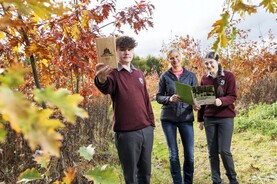In some ways, potential forest owners are spoilt for choice not only in the variety of schemes but also with the range of tree species available – 32 at the last count. The first question to ask when deciding on your forest type (FT) option is ‘what do I want from my forest?’
If the goal is to receive an income in your own lifetime then opt for FT 10, 11 or 12. This applies especially to FT12, which will provide an income stream from year 15 with €20,000/ha plus at years 28 to 35.
FT 11 – if it includes Scots pine, Douglas fir and reinstated European larch – will provide an income at around 20 years from thinnings with final harvest between 50 and 60 years on good sites.
FT 1, 2, 6 and 7 which require either native (oak, birch, alder, etc) or naturalised broadleaves (beech, sycamore or sweet chestnut) can have rotations up to 120 years. While the annual premiums are as high as €1,103, this should not influence your choice, as 20 years can slip by quickly.
Your Sitka spruce neighbour may have carried out two thinnings by that stage, while oak and beech owners will have at best carried out a tending. Sitka revenue could be €2,000/ha or more for two thinnings with the big payday of €20,000, just 10 years away. The oak or beech forest will have provided at best €1,000/ha for firewood – in the case of oak more than €100,000/ha revenue can be expected at maturity, which is around 120 years.
The most sensible approach is to mix the FT choice. Yes, plant native species, but a wise move would be to also establish a spruce or other conifer crop for your pension fund and let the oak take care of your legacy and your grandchildren’s pension fund.






 This is a subscriber-only article
This is a subscriber-only article










SHARING OPTIONS: